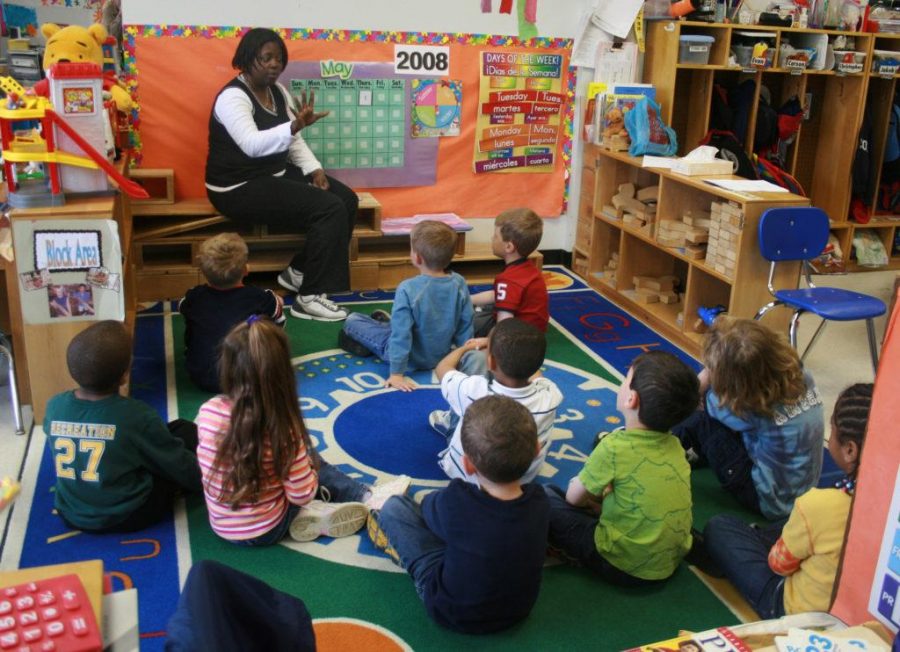McGrath: Public Schools Are Letting Low-Income Students Down – Especially Now
July 31, 2020
Students are used to end-of-summer dread as the the next school year looms near. This year, though, incites an entirely different dread with returning to classrooms amid the coronavirus pandemic. Teaching and learning methods during this crisis have left students and parents in uncertainty and with questions about how to protect staff and students from COVID-19. Recently, Utah County parents protested the governor’s school mask mandate and demanded an in-person school year. Imagine if these parents cared enough about all students to protest and rally about education disparities that severely impact their children’s peers. What about the students that need their school day as childcare or for a learning disability? What about the family who can’t afford a computer for remote learning? Some parents are protesting protective face masks. Others are worried about feeding their children without free and/or reduced lunch and facilitating their learning without adequate time or resources. COVID-19 is highlighting the past and present reality that public education is leaving low-income students behind.
So how exactly does that happen? To start with, property taxes are the primary funding source for public education. Live in a richer, nicer-housing area? Your students will have a richer, nicer school. Live in low-funded, low-property-tax, low-income housing? Your school will reflect that. Bruce Baker of Rutgers University summarizes this education-funding strategy perfectly: “You’ve got highly segregated rich and poor towns. [They] raise vastly different amounts of local revenue based on their local bases, and [Illinois] really doesn’t put much effort into counterbalancing that.” While the quote is in reference to Illinois, Utah uses the same funding mechanisms.
Of course, there’s always plenty of money for corporate subsidies. In the early stages of the pandemic, for example, airlines received a $25 billion bailout — just a small part of the $500 billion that went to large businesses and corporations. Congress’s stimulus package offered public education $13.5 billion, but under conditions it would be distributed to private education as well — in other words, to already advantaged students. Public schools and the low-income and diverse children they educate continue to get to short end of the stick when it comes to what Congress and state legislatures care to fund. Utah children suffer the consequences of those decisions.
This fall, children who need physical classrooms the most — for childcare, technology and meal assistance — may not receive it. It will be painful, as it was this spring, to see private schools “having fun” with remote learning by sending out baking plans and live streaming yoga lessons while lower-income students struggle to learn curriculum with little to no help. How can we expect elementary students with working-class parents to log onto a virtual platform and complete tasks without parental supervision?
I volunteer with children from low-income families at a local preschool. The majority of the students have learning or behavioral disabilities, and need more adult guidance than their peers. Many of their meals come from the school. The program previously struggled with low funding and ways to support children outside of school. Now that we are unable to give them a space to learn due to the virus, they lack all public educational support. And nationwide, some low-income schools have chosen to relax virtual teaching due to students’ lack of resources — meaning schools knew their students didn’t have easy access to computers, and opted to cut lessons rather than solve the problem.
Early childhood is crucial for building young students’ cognitive skills and foundational knowledge. If low-income children miss this time to develop the basic building blocks for lifelong learning, the gap between their and more affluent students’ academic opportunities and success will be extremely difficult to close. Of children who are not proficient in literacy by the fourth grade, 66% will end up incarcerated or on welfare as an adult, and 85% of juveniles in the court system are illiterate. This is a direct indication of how public schools set low-income children up for failure.
Not only has the pandemic highlighted this growing educational gap — the pandemic itself will have exponentially catastrophic effects on poor children’s learning and academic outcomes over time. If we don’t examine and address these issues now, we will see the consequences affect students for lifetimes.







